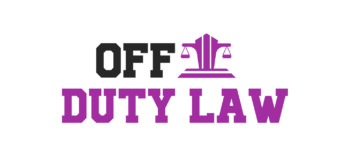Law firm strategic planning isn’t a glossy binder for the shelf: it’s the operating system that powers sustainable growth. In a market where algorithms shift, client expectations climb, and new entrants arrive daily, firms that tie clear goals to digital execution win. This article breaks down how structured planning, content strategy, podcasts and webinars, AI-driven insights, and disciplined adaptability work together. The throughline: integrated planning that compounds visibility, trust, and pipeline over time, without sacrificing agility.
Why structured planning drives law firm scalability
Scalability starts with clarity. Law Firm Strategic Planning aligns business goals with practice-level priorities, resource allocation, and repeatable processes so growth isn’t chaotic. When a firm adds a practice area or opens a new office, it shouldn’t reinvent how intake runs or how matters are staffed, planning creates the blueprint.
Effective plans tie objectives to metrics. Many firms adopt OKRs (Objectives and Key Results) or similar frameworks to turn vision into targets: improve intake-to-consult conversion by 15%, reduce case cycle time by two weeks, raise realization rate by three points, or lower cost per qualified lead by 20%. With those numbers in place, teams can decide where to invest, content, local SEO, webinars, or intake training, and know what “working” looks like.
Process consistency is the multiplier. Mapping the client journey, from first click to signed retainer, exposes friction (slow response times, confusing forms, missed follow-ups). Standard operating procedures for conflicts checks, lead routing, and matter kickoff prevent leakage when volume spikes. The same is true in marketing ops: defined content calendars, approval workflows, and analytics cadences keep execution on-track.
Finally, scalability requires foresight. Quarterly planning and scenario modeling (e.g., an algorithm update, a spike in reviews, or shifting Local Services Ads costs) help firms respond fast without scrambling. Strategy sets direction: structure accelerates it.
Content strategy as the foundation of long-term visibility
In legal services, trust is earned before a call is made. A durable content strategy is the engine of discoverability, authority, and lead quality. Firms that win long term organize content around client intent, not vanity topics.
A practical approach uses a pillar-and-cluster model. Pillars are comprehensive guides to core services (e.g., “California Wrongful Termination Law: A Complete Guide”), while clusters answer specific questions: statutes of limitation, damages calculations, jurisdictional nuances, timelines, and checklists. This structure signals topical authority to search engines and makes navigation intuitive for visitors.
Authoritativeness matters. Publishing under attorney bylines, maintaining robust bios, and referencing statutes or notable cases (without offering individualized legal advice) strengthen Expertise and Experience signals. Structured data (FAQ, Article, Organization schema), internal links, and fast, accessible pages round out technical SEO.
Distribution compounds reach. Pillars can be repurposed into client alerts, LinkedIn posts, email newsletters, and short video explainers. Location pages and Google Business Profile optimization align content with local intent, critical for practice areas where proximity matters.
Measurement keeps the strategy honest: organic share of voice on priority terms, impression-to-click rates, engagement on practice pages, and, most importantly, organic visit-to-consultation conversion. When content is built for real questions and refined by data, visibility becomes a long-term asset rather than a temporary spike.
Podcasts and webinars as client engagement tools
Podcasts and webinars turn expertise into ongoing conversations, at scale. For complex or evolving topics (employment law changes, data privacy updates, construction disputes, venture financings), these formats build familiarity and trust faster than static pages alone.
A simple cadence works: a monthly podcast featuring partner Q&As, recent case analysis, or interviews with allied professionals: plus quarterly webinars tied to timely issues. Registration pages feed a CRM, allowing firms to see which topics attract which audiences and to follow up compliantly.
Production doesn’t need to be cinematic. Clear audio, a strong outline, and tight editing matter more than flashy intros. Every episode or session should generate multiple assets: a transcript-expanded blog, short clips for social, slide decks, and an email summary with key takeaways. Over time, these create a searchable knowledge base that supports both SEO and business development.
What to track: subscriber growth, average listen or watch time, live attendance and on-demand views, Q&A participation, and assisted pipeline influence. When tied back to Law Firm Strategic Planning, podcasts and webinars shift from “nice branding” to measurable client engagement engines.
AI-driven insights for competitive digital growth
AI is not a strategy on its own, but it is a powerful accelerator when embedded in the plan. Firms use AI to identify opportunities faster, execute content more efficiently, and personalize experiences, while keeping human judgment in the loop.
On the research side, AI can cluster thousands of keywords by intent, surface content gaps against competing domains, and forecast seasonality for specific matter types. Combined with GA4 and Search Console data, predictive models estimate which topics and pages are likely to drive qualified consultations next quarter.
For production, attorneys can draft outlines and citations: AI helps with first-pass structuring, summarizing lengthy regulations, and suggesting FAQs. Editorial review remains essential for accuracy, ethics, and jurisdictional nuances. Entity-focused optimization (clear definitions, relationships, and schema) helps content align with how modern search understands topics.
Client experience benefits too. AI-enabled chat on a website can triage common questions, capture intake details, and route matters appropriately, without giving legal advice. Sentiment analysis on reviews and call transcripts reveals service gaps (response time, clarity of fees) that planning can address.
Guardrails are non-negotiable: protect confidentiality, avoid feeding sensitive data into public models, and maintain human review policies. With these in place, AI-driven insights sharpen competitive digital growth instead of creating risk. Insights from https://growlaw.co/ similarly emphasize leveraging data and AI responsibly — turning analytics into actionable strategy while keeping compliance and trust central.
Balancing adaptability with long-term planning
Great plans breathe. The firms that scale balance a durable direction with room to adjust tactics quickly.
One useful model blends horizons: Horizon 1 (optimize proven channels like organic search and referrals), Horizon 2 (expand with podcasts, webinars, and targeted paid), and Horizon 3 (bet on emerging plays, new practice niches, AI-enabled experiences, or strategic partnerships). Budgets can mirror a 70–20–10 split across these horizons.
Governance keeps changes disciplined. A monthly marketing and intake review surfaces performance, while quarterly planning resets targets. Pre-mortems and trigger maps (e.g., if Local Services Ads CPC rises 30%, if a major algorithm update hits, if review velocity drops) define actions in advance. Playbooks document how to pause, pivot, or double down.
Change management matters as much as metrics. Training attorneys to contribute to content, appear on webinars, and follow BD workflows ensures the plan survives staff turnover and busy seasons. In short, adaptability is designed, not improvised.












